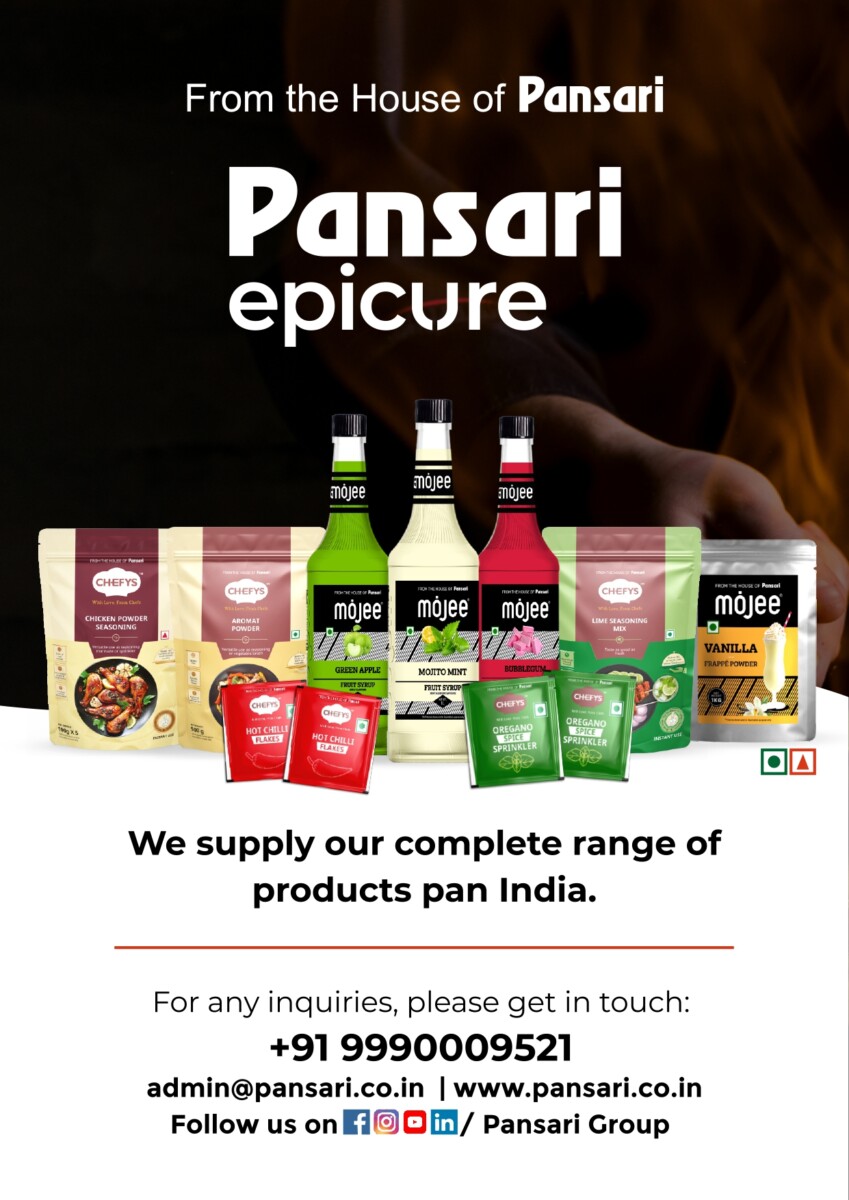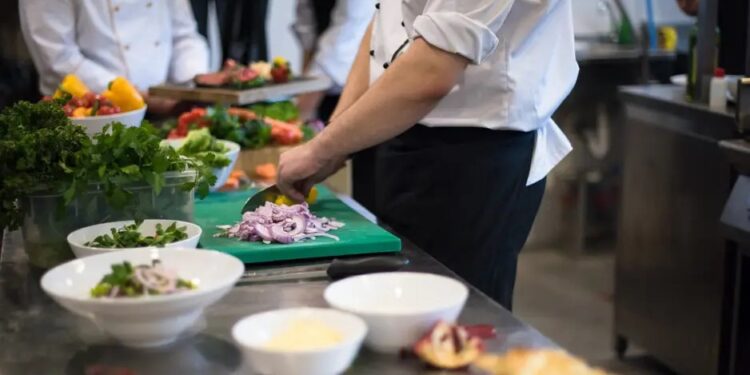THIS ARTICLE IS POWERED BY

-Khwaish Jain | IMAWS
The emergence of cloud kitchens has marked a transformative shift in the hospitality landscape, reshaping the way food is prepared, delivered, and consumed. These innovative culinary hubs represent a departure from traditional brick-and-mortar restaurants, emphasizing a virtual, delivery-centric model that capitalizes on the burgeoning trend of online food ordering.
Cloud kitchens leverage the power of technology to streamline operations, optimize costs, and enhance overall efficiency. By eliminating the need for a physical dining space, these establishments can focus on perfecting their menu offerings and delivery mechanisms. This model not only caters to the increasing demand for convenient, on-the-go dining experiences but also provides a platform for culinary entrepreneurs to experiment with diverse cuisines without the constraints of a traditional setup.
The rise of app-based food delivery services further fuels the success of cloud kitchens, offering consumers a plethora of choices at their fingertips. This paradigm shift not only responds to evolving consumer preferences but also presents a strategic opportunity for restaurateurs to adapt to the digital age. As the cloud kitchen phenomenon continues to gain momentum, it is poised to redefine the hospitality industry, fostering a dynamic ecosystem that thrives on innovation, adaptability, and the seamless fusion of technology and gastronomy. Several industry leaders are weighing in on this trend, sharing their thoughts and insights.
hospitality industry, fostering a dynamic ecosystem that thrives on innovation, adaptability, and the seamless fusion of technology and gastronomy. Several industry leaders are weighing in on this trend, sharing their thoughts and insights.
Sumit Gambhir, Co-founder, The Pantry – Goodness Delivered shared a very positive opinion about the emergency of cloud kitchens and said, “Covid hit the hospitality industry badly and Cloud kitchens sprouting up during the phase helped restaurants survive and grow. With food operators like Zomato and Swiggy making deliveries convenient, consumers found it easier to order in than to plan around visiting restaurants. Zomato added about 16,000 restaurants in the three months in Q3FY24; and has now increased its partner base to a total of about 2,54,000 restaurants out of which a majority are delivery-only restaurants. It shows how delivery  kitchens have emerged as a lower capital investment opportunity with higher operational efficiency. Cloud kitchens operating with multiple brands work on consolidating costs. The most popular categories in delivery are Burgers, Pizzas & Biriyanis. Of late Shawarma rolls, North Indian curries, and Chinese have also been high growth trends. Cloud kitchens are here to stay and are the future of the F&B industry. With consumer trends and demands changing the cloud kitchen model is thriving.”
kitchens have emerged as a lower capital investment opportunity with higher operational efficiency. Cloud kitchens operating with multiple brands work on consolidating costs. The most popular categories in delivery are Burgers, Pizzas & Biriyanis. Of late Shawarma rolls, North Indian curries, and Chinese have also been high growth trends. Cloud kitchens are here to stay and are the future of the F&B industry. With consumer trends and demands changing the cloud kitchen model is thriving.”
Nirvaan Thacker, Co-founder & Chef, Aglio agreed to what Sumit had to say and added, “Cloud kitchens have become a game-changer in the hospitality industry. The concept has gained a lot of growth due to various factors and brought about significant changes in how the food industry operates. These establishments are designed exclusively to satisfy online food orders; they do not offer the customary dine-in option. We have seen a rapid expansion growth of cloud kitchens after covid 19. They eliminate the need for prime retail locations, extravagant interiors, and dining spaces, allowing businesses to focus on the efficiency of food production and delivery. This cost-saving aspect has attracted entrepreneurs and established restaurant chains alike. The emergence of cloud kitchens has led to a dynamic shift in the hospitality industry driven by technological advancements and shifting consumer preferences. Despite certain obstacles, the potential for cost savings, quick expansion, and data-driven strategies make this model a powerful force influencing the direction of food service.”
Zorawar Kalra, Founder and Managing Director, Massive Restaurants Pvt Ltd said that there is a lot more to explore in this sector by adding, “The cloud kitchen phenomenon is here to stay, we haven’t even scratched the tip of the iceberg. The convenience aspect of Cloud Kitchens simply cannot be beaten, especially with high-quality restaurants and players in the field of the F&B sector are now entering the space of cloud kitchens and launching passionate projects that deliver restaurant-like quality food at your home. While India’s market still pales in comparison to the Chinese and American markets, the acceleration is going to be meteoric. In  the coming years, you will see the propagation of the cloud kitchen model all across India, including tier two and tier three cities. This is not just a trend, it’s a phenomenon and here to stay”.
the coming years, you will see the propagation of the cloud kitchen model all across India, including tier two and tier three cities. This is not just a trend, it’s a phenomenon and here to stay”.
Sampatlal Sancheti, Founder and Owner, Shri Nakoda Distributors has a mixed feeling about the industry however he seemed optimistic and shared his views by saying, “The advent of cloud kitchens has notably reduced production costs, enabling companies to offer products at more competitive prices. Unlike traditional live kitchens requiring chefs, teams, and equipment at every expansion location, the scarcity of space in Mumbai poses a challenge for restaurant expansion. Recognizing this, the central kitchen concept emerges as a sustainable solution, minimizing costs and logistical constraints while addressing the modern demand for convenience. In Mumbai’s space-constrained landscape, the central kitchen model is not just a trend; it’s a strategic and enduring concept for the future.”

Jarna Nair, Manager R&D, ITC Hotels denied the decline in the cloud kitchen sector by mentioning, “The resilience of the cloud kitchen industry remains evident, driven by the success of certain establishments that excel in both product quality and effective marketing. I firmly believe that as long as a cloud kitchen delivers a compelling product and executes strong marketing strategies, the industry will not face a decline. It’s important to note that the cloud kitchen doesn’t pose a threat to the hotel industry because we operate in distinct playgrounds, each with its expertise. Hotels are seasoned players in their sector, adept at navigating their unique challenges.”
The rise of cloud kitchens has undeniably revolutionized the hospitality industry, offering a dynamic solution to the challenges posed by changing consumer behaviors and the impact of events like the COVID-19 pandemic. The shift towards virtual, delivery-centric models has allowed for increased operational efficiency and cost optimization. As highlighted by industry leaders the convenience, cost savings, and potential for rapid expansion make cloud kitchens a formidable force in the evolving landscape of food services. The trend is not merely a temporary response to current circumstances but a long-term phenomenon reshaping the traditional norms of the restaurant business. With the fusion of technology, data-driven strategies, and an unwavering focus on customer preferences, cloud kitchens are poised to sustain their momentum and continue influencing the future of the F&B industry across diverse markets.
THIS ARTICLE IS POWERED BY








